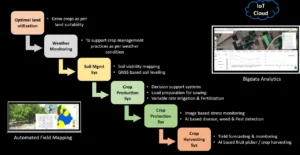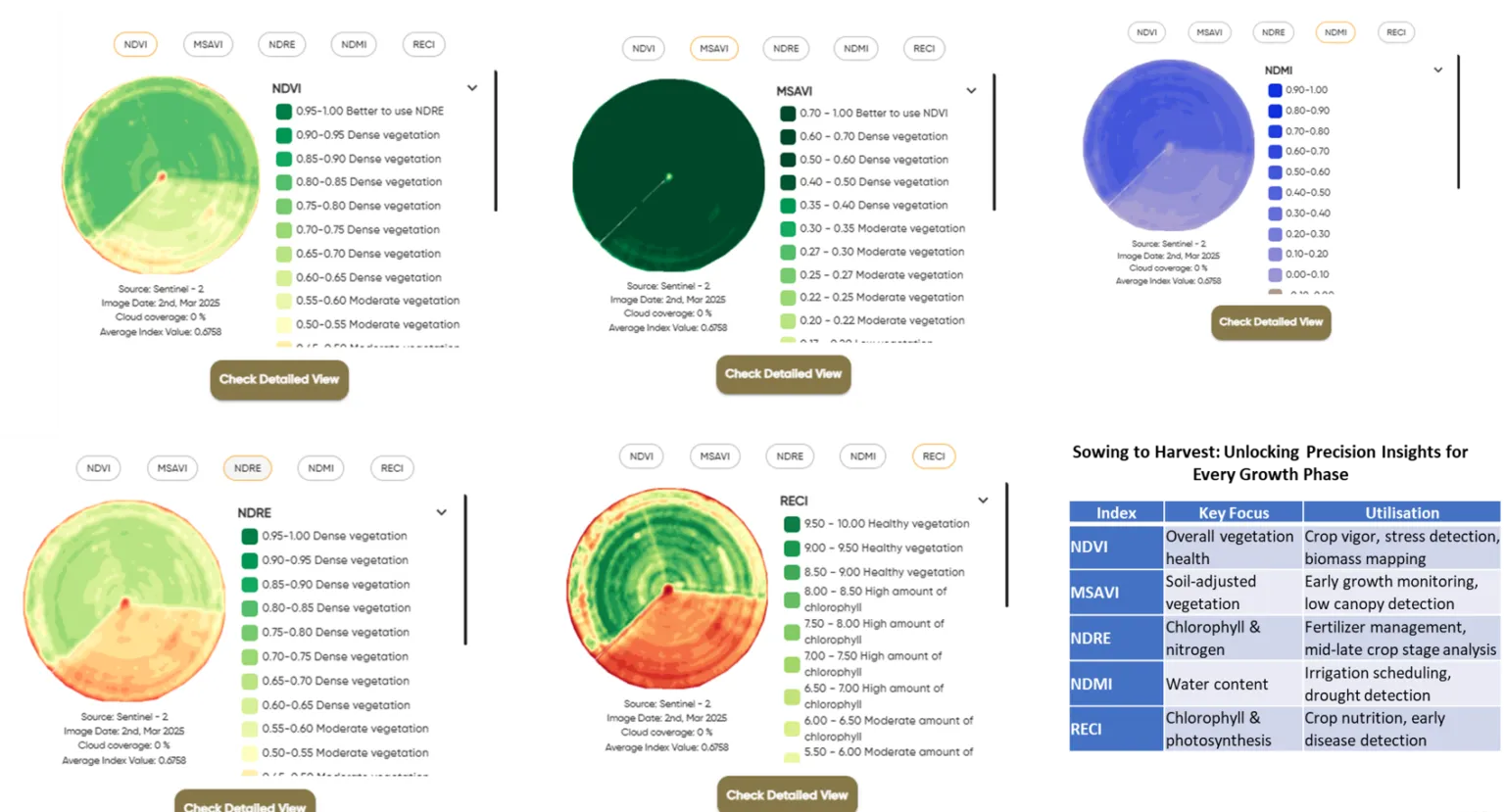

Effective crop monitoring is crucial for maximizing yields, reducing input costs, and improving sustainability—the core of Precision Agriculture. By using satellite- and drone-based monitoring indices, farmers gain real-time insights into crop health, moisture levels, and nutrient availability.
These indices analyze vegetation reflectance in different light bands, such as Near-Infrared (NIR), Red, and Shortwave Infrared (SWIR), to assess plant vigor, stress levels, and growth patterns.
With these insights, farmers can make data-driven decisions to optimize irrigation, fertilization, and harvest timing, leading to more efficient resource use and higher productivity.
This article outlines best practices for monitoring field crops and pastures throughout their life cycles using scientifically validated vegetation indices in smart farming.
The effectiveness of a vegetation index depends on two critical factors:
Different indices work best for field crops, pastures, orchards, or forests due to variations in:
2. Vegetation Growth Stage
Certain indices are more effective at early growth stages, while others provide better insights into mature crops.
The next sections detail best monitoring practices for field crops and pastures, ensuring farmers use the right vegetation indices at each stage of growth.
 Summary
Summary



Using agricultural monitoring indices, farmers can:
 Summary
SummaryUsing agricultural monitoring indices, farmers can:


